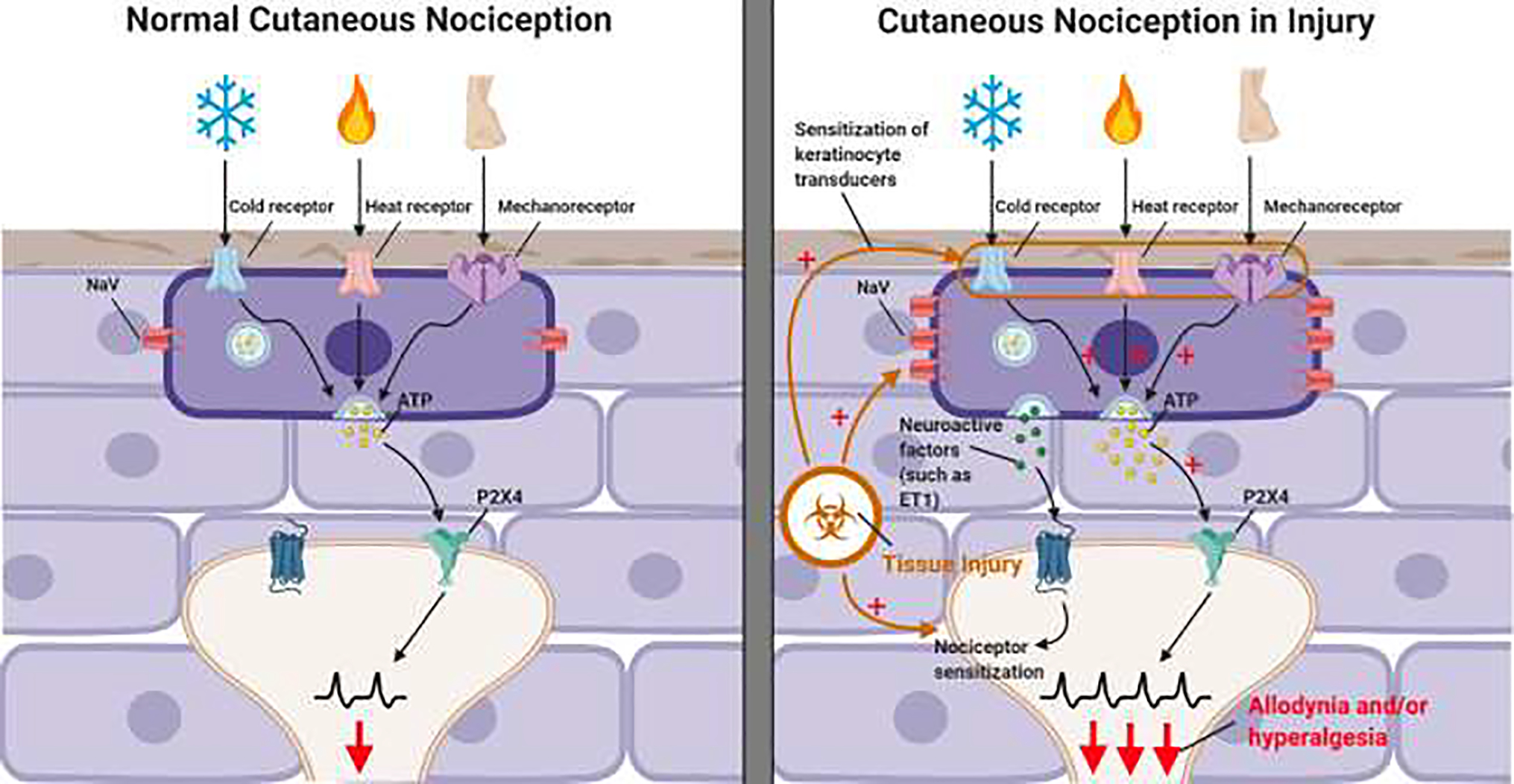Figure 1.

Under normal healthy conditions, keratinocytes contribute to the detection of innocuous and noxious cutaneously applied cold, heat, and mechanical stimuli. This is mediated by keratinocyte to sensory neuron ATP-P2X4 signaling but also likely involves other unidentified signaling pathways224,256. The molecular machinery that enables keratinocytes to detect heat, cold and mechanical stimuli have not been definitively identified, though keratinocytes do express the cold receptor TRPM8, the warm and heat activated receptors TRPV1, TRPV3 and TRPV4, as well as the mechanoreceptor Piezo145,47,257–259.
Keratinocyte to nociceptor signaling may be enhanced following injury, contributing to the sensitization of nociceptors and the development of allodynia and hyperalgesia following skin injury. A potential mechanism through which keratinocytes could enhance nociception is through the injury induced sensitization of keratinocyte expressed receptors. Keratinocyte also express a variety of voltage gated sodium channels (NaV) and the expression of many of these are upregulated in states of neuropathic injury241. Sensitization of keratinocyte expressed ion channels could lead to increased activation of keratinocytes in response to cutaneous applied stimuli and a subsequent increase in the release of ATP and other keratinocyte-expressed neuroactive factors onto nociceptor terminals. Figure 1 was Created with BioRender.com
